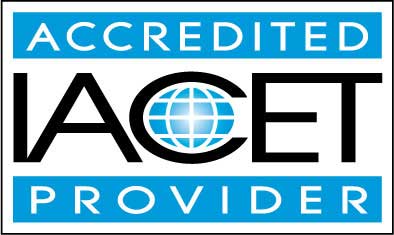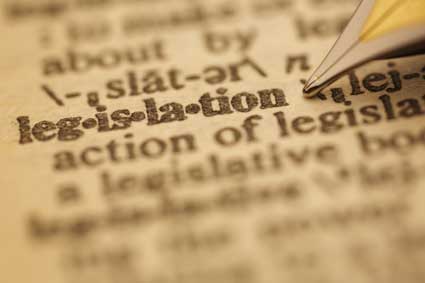Course Description
Delving into the depths of history, studying ancient civilizations is a riveting journey through time that offers more than just a chronicle of dates and events; it is an in-depth exploration into the very essence of human progress. This course offers a comprehensive look at the myriad ways in which the ancients have shaped the contours of the modern world. From groundbreaking technological advancements to the evolution of political systems, every thread of the past is woven into the present.
We commence our journey by acknowledging the bedrock of all societal advancements: the invention of writing, the wheel, the mastery of fire, and the development of metallurgy with brass, bronze, and iron. These are not mere historical footnotes but cornerstones that have transformed human existence. The impact of ancient innovations continues to permeate contemporary life, from the principles of democracy to architectural design, from our legal systems to the religious traditions that guide billions.
Throughout the course, students will engage with a carefully structured curriculum, crafted to unveil the historical significance and legacy of each civilization under study.
Lesson 1: Ancients for Moderns
We set the stage by establishing the context of why ancient history matters today. We discuss how learning about past civilizations is not only intellectually stimulating but also serves as a critical lens through which we view current societal norms and values.
Lesson 2: Sumer and the Mesopotamian Civilizations
The fertile crescent of Mesopotamia, known as the 'Cradle of Civilization', gave birth to some of the earliest urban centers. Students will explore the societal structures, contributions to law and governance, and technological innovations like cuneiform writing that emerged from Sumer and its neighboring cultures.
Lesson 3: Ancient Egypt, Part I
In the first of two lessons on Egypt, we delve into the Old and Middle Kingdoms, examining the construction of the pyramids, mummification, and the administrative prowess that orchestrated the Nile's resources.
Lesson 4: Ancient Egypt, Part II
Building on our understanding, we move to the New Kingdom, discussing the significance of pharaonic power, the expansion of empire, and the cross-cultural interactions that defined this period.
Lesson 5: Phoenicia and Minoa
We explore the seafaring civilizations of the Mediterranean, whose maritime trade networks and alphabetic script laid the groundwork for the spread of ideas and language.
Lesson 6: Israelites
This lesson delves into the ancient Israelites, whose monotheistic religion and sacred texts have had a profound impact on the religious and ethical frameworks of modern societies.
Lesson 7: Media and Persia - Peoples of Ancient Iran
Students will learn about the powerful empires of Media and Persia, their innovative administrative systems, and the Zoroastrian religion that influenced later monotheistic faiths.
Lesson 8: Ancient Greece, Part I
The early stages of Greek civilization are examined, focusing on the Dark Ages and Archaic period, laying the foundation for the Classical era's unparalleled cultural achievements.
Lesson 9: Ancient Greece, Part II
A focus on the Classical period reveals the zenith of Greek art and thought, the birth of democracy in Athens, and the military prowess of Sparta, culminating in the Persian Wars.
Lesson 10: Ancient Greece, Part III
We discuss the Hellenistic period, following Alexander the Great's conquests, which saw the fusion of Greek and Eastern cultures and the spread of Hellenistic knowledge across the known world.
Lesson 11: Rome, Part I - Long Live the Republic!
The Roman Republic's rise, with its unique blend of oligarchy and democracy, provides a powerful case study on governance, citizenship, and expansionism.
Lesson 12: Rome, Part II - The Punic Wars and the End of the Republic
Here, the course examines the Republic's militaristic ventures, its rivalry with Carthage, and the internal strife that led to its downfall.
Lesson 13: Rome, Part III - The Roman Empire and Its Legacy
We transition to the Roman Empire, exploring its monumental impact on law, architecture, engineering, and governance that echo in modern institutions.
Lesson 14: Rome, Part IV - The Legacy of Rome
The concluding lesson reflects on Rome's enduring influence, considering its contributions to Western civilization, the spread of Christianity, and its legacies that linger to this day.
Assignments and exams throughout the course will challenge students to not only memorize facts but also analyze the interconnectivity of these ancient civilizations with modern-day practices and beliefs.
This course is meticulously designed for the curious minds eager to explore the grand narrative of human history. It is a journey that promises to enhance the understanding of our collective past and offer insightful perspectives on the challenges of the present. Join us as we traverse through the annals of history, uncovering the stories of those who laid the cornerstones of civilization. This is not just a study of history; it's an investigation into the core of humanity itself.
- Completely Online
- Self-Paced
- Printable Lessons
- Full HD Video

- 6 Months to Complete
- 24/7 Availability
- Start Anytime
- PC & Mac Compatible
- Android & iOS Friendly
- Accredited CEUs

Learning Outcomes
- Describe the background of studying the ancients for modern people.
- Summarize Sumer and the Mesopotamian Civilizations.
- Describe Ancient Egypt and their civilization.
- Summarize Phoenicia and Minoa.
- Describe Israelites in regards to ancient civilizations.
- Identify Media and Persia - Peoples of Ancient Iran.
- Summarize Ancient Greece civilizations.
- Summarize Rome and Roman ancient civilizations.
- Describe The Roman Empire and Its Legacy.
- Demonstrate mastery of lesson content at levels of 70% or higher.
Assessment Guide
| Assessment | Points |
|---|---|
| Lesson 1 Assignment | 10 points |
| An Introduction | 5 points |
| Lesson 1 Exam | 9 points |
| Lesson 2 Assignment | 25 points |
| What Made The Sumerians Truly Unique? | 40 points |
| Lesson 2 Exam | 10 points |
| Lesson 3 Assignment | 15 points |
| Lesson 3 Exam | 9 points |
| Lesson 4 Assignment | 50 points |
| Lesson 4 Exam | 10 points |
| Lesson 5 Assignment | 25 points |
| Lesson 5 Exam | 10 points |
| Lesson 6 Assignment | 15 points |
| Lesson 6 Exam | 10 points |
| Lesson 7 Assignment | 15 points |
| Lesson 7 Exam | 9 points |
| Lesson 8 Assignment | 15 points |
| Lesson 8 Exam | 10 points |
| Lesson 9 Assignment | 15 points |
| Lesson 9 Exam | 7 points |
| Lesson 10 Assignment | 15 points |
| Lesson 10 Exam | 10 points |
| Lesson 11 Assignment | 15 points |
| Lesson 11 Exam | 10 points |
| Lesson 12 Assignment | 15 points |
| Lesson 12 Exam | 9 points |
| Lesson 13 Assignment | 25 points |
| Lesson 13 Exam | 9 points |
| Lesson 14 Assignment | 15 points |
| Lesson 14 Exam | 10 points |
| The Final Exam | 61 points |















